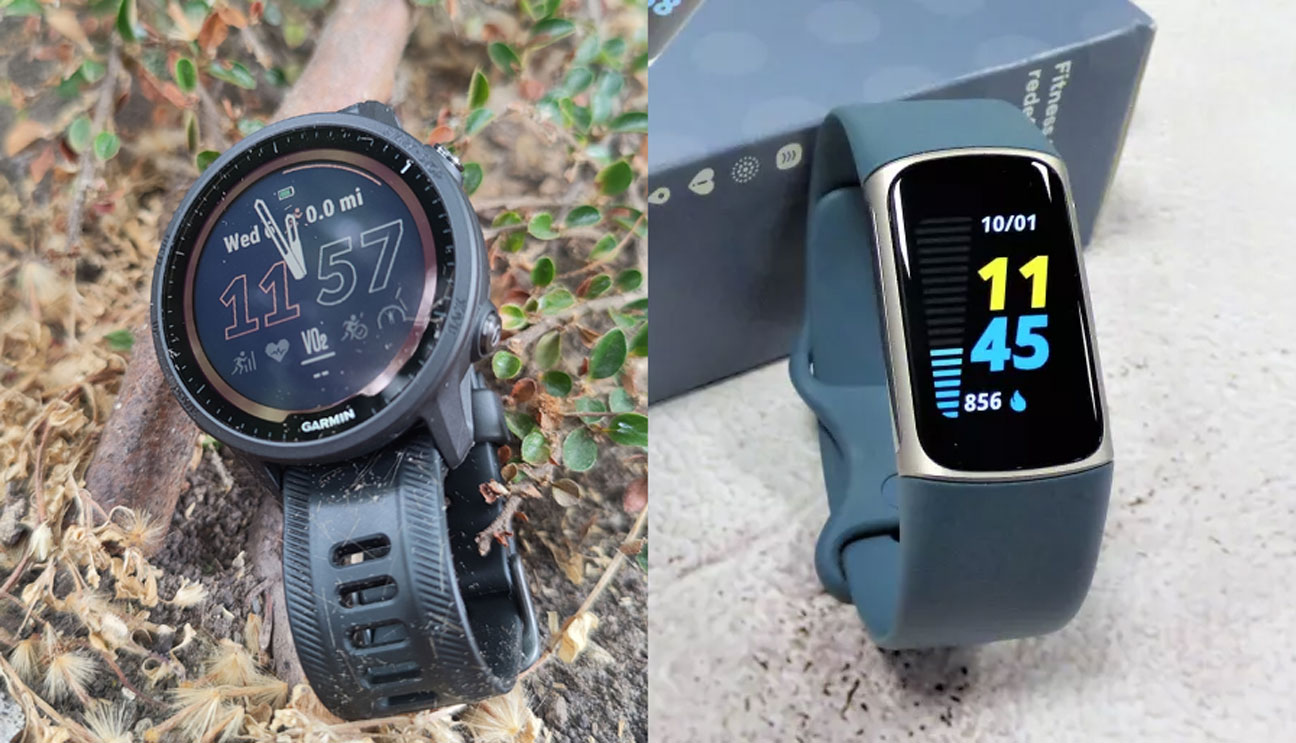After wearing Garmins for two months, I’m never going back to Fitbit
Fitbit Premium loses out to Garmin Connect

Last year, I tested the Fitbit Charge 5 for review, and I was really impressed. It’s the best fitness tracker in Fitbit’s stable and one of the best Fitbits ever in my opinion: feature-stuffed, with a larger-surface screen than the Fitbit Luxe, beautifully bright and effectively operated via touch. I was impressed enough to keep using it while I had that six-month trial of Fitbit Premium that came with the device, switching back and forth as I was reviewing other devices.
Fitbit Premium, from a technical point of view, is a great service. It’s well-designed, with a wonderfully accessible interface perfect for fitness beginners. Simple scores, such as your Daily Readiness score, Sleep score and so on, offer clear feedback on how you’re doing, with more detailed metrics available to you if you want to go deeper into how your body is operating.
Guided programs help you follow specific exercise and diet plans, complete with individual workouts and recipes. It’s designed to be a home for all your vital health and fitness information collected by your phone, scales and fitness tracker, displayed on the “Health Metrics” dashboard. It's a lovely UX, all rounded corners and easy-to-understand, forgiving presentation.
There’s just one problem: it costs $9.99 a month in the US, £7.99 in the UK, or AU$15.49 in Australia. Alternatively, you can pay $79.99 in the US, £79.99 in the UK, or AU$129.99for a year. Although you get either six months or one year’s worth of subscription free with a new device, any usage after that will be charged. Getting a used Fitbit? You’re only likely to be able to access the 90-day free trial offered to new app on-boarders, further increasing the cost of your device.
Let’s say you get a Fitbit for $150 in the US, which might be a Charge 5, a Fitbit Luxe, or Versa 3 at a discounted price, and with it comes a six-month free trial of Fitbit Premium. Once you’ve loaded all your health information, followed some guided programs, and taken advantage of what Fitbit has to offer, you might choose to continue using the subscription for another year, paying $80 to do so. Effectively, your Fitbit has actually cost you $220. On a rolling subscription, it would cost $260.

Once my trial period was up, as good as Fitbit Premium was, I decided not to renew. I was chopping and changing devices so much (as a fitness tech reviewer, it comes with the territory) that I didn’t think I would get enough bang for my buck, as I wouldn’t be constantly making the most of my Premium subscription.
I had trialed Garmins before, but over the last few months, I have worn the Enduro, Forerunner 955 Solar, and Forerunner 255 Music in quick succession, and I fell in love with Garmin’s high-powered devices. Of course, I’m not going to compare the Charge 5 to an expensive brute of a watch like the Garmin Enduro, which is designed for serious endurance athletes: fundamentally, these devices are very different, aimed at two different groups of fitness enthusiasts.
Sign up for breaking news, reviews, opinion, top tech deals, and more.
However, Garmin Connect is not only a more comprehensive tool than Fitbit Premium, it’s also not hidden behind a paywall. Although Garmin's UX requires a little bit more effort to dive into (it's not nearly presented as nicely) and fully understand your metrics, it adds a wealth of detail missing in Fitbit Premium. Simple scores such as your “Body Battery” are still present, allowing you to understand how well rested you are, and your stress score comes packaged in an efficient pie chart format, with red slices indicating severe stress and blue indicating relaxation.
Steps taken, calories burned and floors climbed are all shown against the targets you set for yourself. Heat maps of the body highlight the muscles most recently worked. Heart rate variability and respiration stats contribute to your sleep score, but you can also dive into these features individually.
But it's in endurance exercise that Garmin Connect really shines. Take running, for example; your Garmin GPS creates a detailed map of the course you ran, with your route showing different colors depending on speed and exertion. Details on your cadence, pace, and more can be provided, varying from device to device with more expensive, high-powered devices obviously demonstrating more metrics. But for a free piece of companion software, it gives you far more information than Fitbit Premium’s top-line approach to metrics. I’m not going back to Fitbit Premium for any length of time unless it’s to review a new device.
Ordinarily, I would say Fitbit Premium’s approach is great for beginners, while Garmin Connect is for people more serious about their training. However, Fitbit’s paywall suggests it should be the other way around.
Let’s say you live in the US and have that $150 Fitbit for two years. A six-month Fitbit Premium subscription is free, and you pay around $140 in total for the remaining 18 months. Why wouldn’t you just get a more powerful $300 device from the outset, use the better free software that comes with it, and get more fitness bang for your buck?

Matt is TechRadar's expert on all things fitness, wellness and wearable tech.
A former staffer at Men's Health, he holds a Master's Degree in journalism from Cardiff and has written for brands like Runner's World, Women's Health, Men's Fitness, LiveScience and Fit&Well on everything fitness tech, exercise, nutrition and mental wellbeing.
Matt's a keen runner, ex-kickboxer, not averse to the odd yoga flow, and insists everyone should stretch every morning. When he’s not training or writing about health and fitness, he can be found reading doorstop-thick fantasy books with lots of fictional maps in them.